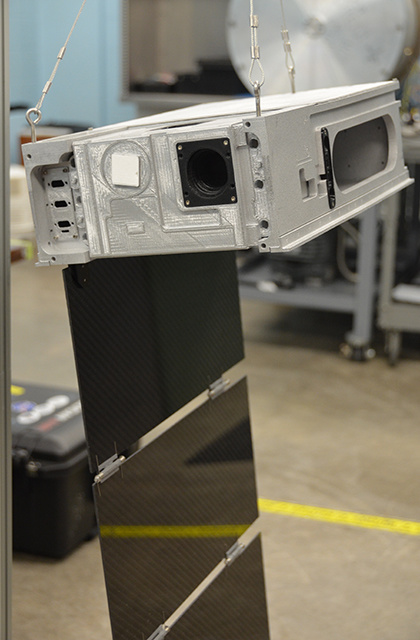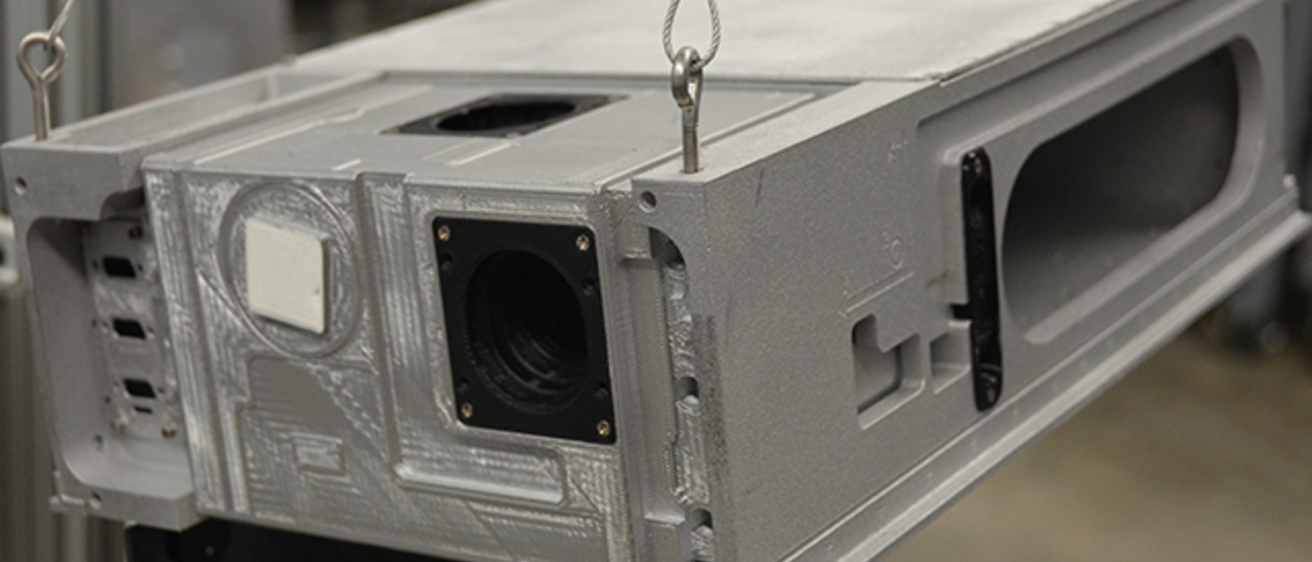Phil Kaaret could be on the verge of solving a cosmological mystery that began billions of years ago.

On May 20, a satellite roughly the size and shape of a shoebox will be launched into space and begin searching for matter believed to be missing since the birth of the universe. The satellite was designed and built by Kaaret, professor in the Department of Physics and Astronomy at the University of Iowa, along with students and research assistants in his lab. You can watch the launch live on NASA’s website.
Scientists believe that as much as one-third of baryonic matter—things all around us, from planets to furniture to humans—remains unaccounted for from the so-called “Big Bang” nearly 14 billion years ago.
Kaaret’s instrument will scan the cosmos to try to locate the missing matter.
“It’s kind of embarrassing to have this stuff missing,” Kaaret says with a chuckle. “If we can find the baryonic matter, it will tell us a lot about how structures on a cosmological scale, such as galaxies, may have formed. It will tell us how we got from that early universe to the universe we have today.”
Astronomers believe the missing baryonic matter may reside in hot, gaseous halos around galaxies. Three X-ray detectors on HaloSat will map the distribution of hot gases surrounding the Milky Way galaxy for evidence of lingering baryonic matter. Such evidence then could be extrapolated to other galaxies to address the missing matter gap.
“There have been studies in which researchers report to have found all the missing matter in the halos surrounding galaxies, but there are people who don’t agree with that interpretation,” Kaaret says. “So, we’re trying to make a better observation in the X-ray spectrum than what has been done to date.”

Kaaret has been involved with cube satellite research for several years. He constructed a radiation detector for a cube satellite built by the Radio Amateur Satellite Corp. to measure the Earth’s Van Allen belts, as well as the radio antennae installed on the roof of Van Allen Hall, which communicate with cube satellites. In March 2015, on his third cube satellite proposal for NASA, he learned he won $3.7 million to design and build HaloSat.
That’s when Kaaret began recruiting students to join the project.
One of the first to come on board was Will Fuelberth, a junior physics, astronomy, and math major from Spirit Lake, Iowa.
Fuelberth says he knew he wanted to learn about space research when he arrived at the UI in fall 2015, so he looked at faculty biographies in the Department of Physics and Astronomy and contacted those who seemed interesting.
“Dr. Kaaret was the first one to email me back, and he offered me the opportunity to work on a small satellite that would be in space in two years,” Fuelberth says. “And as a freshman at the time, it was cool to know I could work on something that would be in space, that I would touch with my own hands.”
Fuelberth wrote computer code for HaloSat, prepared it for flight, and along with second-year physics and astronomy graduate student Daniel LaRocca, from Palatine, Illinois, will select targets on which the instrument should train its X-ray detectors.
“Coming in, I didn’t know what research looked like,” says Fuelberth. “I’ve developed so many skills outside of what I’ve learned in classes. I’ve gotten practical knowledge that I can apply potentially to my career.”
Fuelberth will accompany Kaaret and others in his lab to watch HaloSat’s launch aboard a giant rocket from Wallops Flight Facility in Virginia. The device will travel as part of a resupply mission to the International Space Station. Sometime after HaloSat arrives at the ISS, astronauts will release it into space, where it will orbit the Earth and begin making measurements.
“There’s definitely a childlike wonder to all this,” Fuelberth says. “I’ve always been interested in space, and seeing this happen will evoke a childhood joy.”
Students and research staff involved in HaloSat
- Tracy Behrens, engineering coordinator
- Brandon Berger, graduate student
- Will Fuelberth, undergraduate
- Hannah Gulick, undergraduate
- Jesse Haworth, undergraduate
- Don Kirchner, senior engineering associate at the UI and principal engineer
- Daniel LaRocca, graduate student
- Ross McCurdy, undergraduate (graduated from the UI in 2017)
- William Robison, consulting engineer
- Emily Silich, undergraduate
- Riley Wearmouth, undergraduate
- Keith White, undergraduate (graduated from the UI in 2017)
- Anna Zajczyk, UI postdoctoral research scholar and instrument scientist
